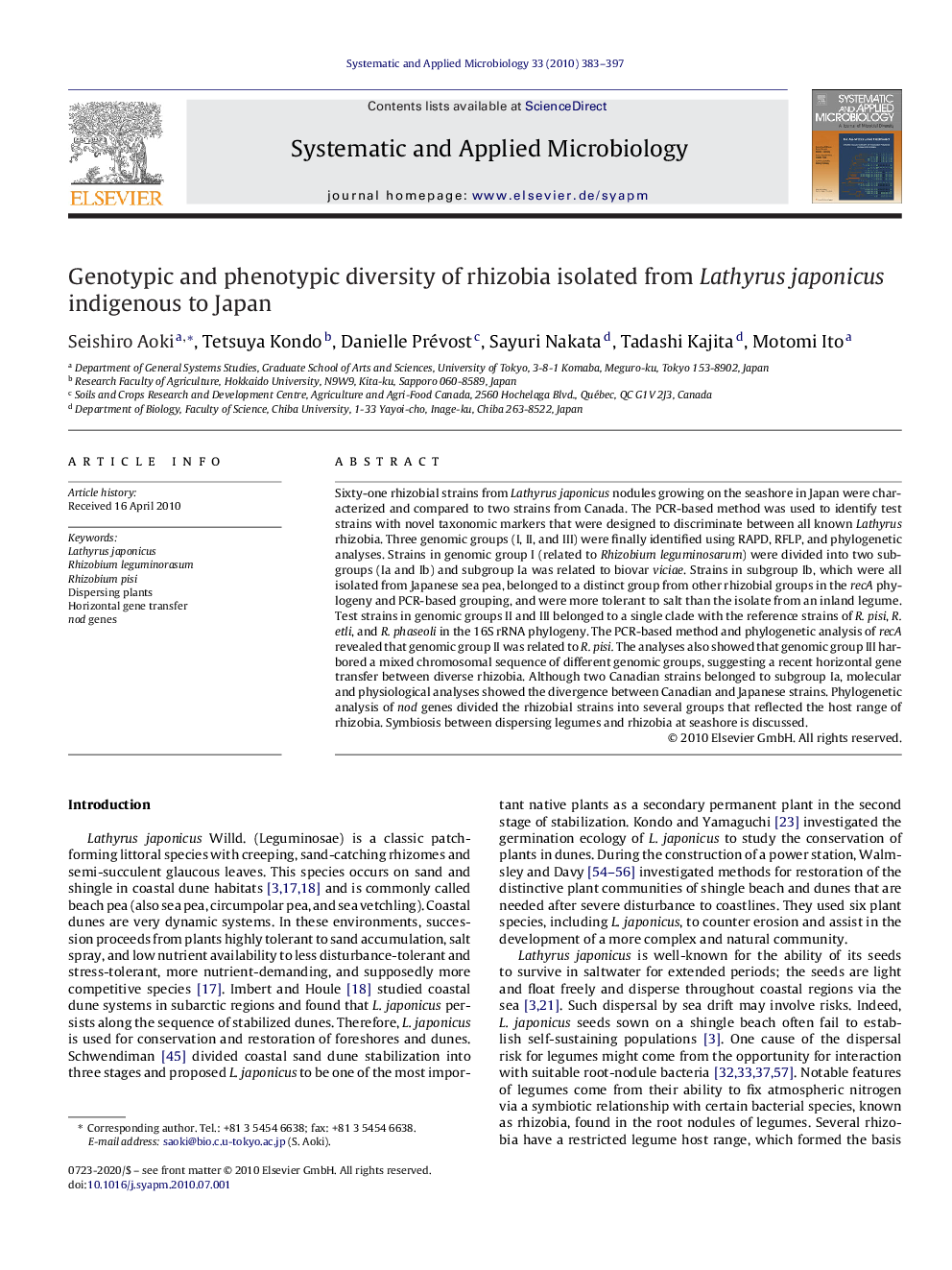| Article ID | Journal | Published Year | Pages | File Type |
|---|---|---|---|---|
| 2063402 | Systematic and Applied Microbiology | 2010 | 15 Pages |
Sixty-one rhizobial strains from Lathyrus japonicus nodules growing on the seashore in Japan were characterized and compared to two strains from Canada. The PCR-based method was used to identify test strains with novel taxonomic markers that were designed to discriminate between all known Lathyrus rhizobia. Three genomic groups (I, II, and III) were finally identified using RAPD, RFLP, and phylogenetic analyses. Strains in genomic group I (related to Rhizobium leguminosarum) were divided into two subgroups (Ia and Ib) and subgroup Ia was related to biovar viciae. Strains in subgroup Ib, which were all isolated from Japanese sea pea, belonged to a distinct group from other rhizobial groups in the recA phylogeny and PCR-based grouping, and were more tolerant to salt than the isolate from an inland legume. Test strains in genomic groups II and III belonged to a single clade with the reference strains of R. pisi, R. etli, and R. phaseoli in the 16S rRNA phylogeny. The PCR-based method and phylogenetic analysis of recA revealed that genomic group II was related to R. pisi. The analyses also showed that genomic group III harbored a mixed chromosomal sequence of different genomic groups, suggesting a recent horizontal gene transfer between diverse rhizobia. Although two Canadian strains belonged to subgroup Ia, molecular and physiological analyses showed the divergence between Canadian and Japanese strains. Phylogenetic analysis of nod genes divided the rhizobial strains into several groups that reflected the host range of rhizobia. Symbiosis between dispersing legumes and rhizobia at seashore is discussed.
